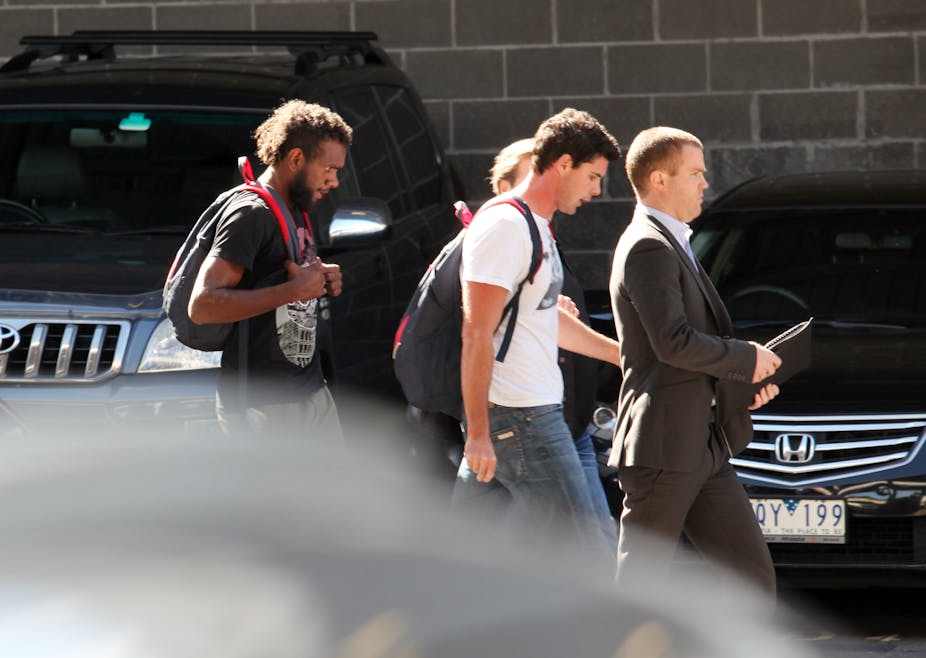Imagine if the indigenous people of this country didn’t play Australian football, the only truly unique sport this continent country has ever created.
As a percentage of the population, indigenous people are massively over-represented in the AFL. But that is about the only sport where that happens. And in the wake of recent events, you have to ask yourself how long this situation will continue.
Let me start by doing something I don’t like to do: make a generalisation.
I am fairly confident that when it comes to Indigenous issues far too many whitefellas have very strong opinions about Indigenous Australians, history and politics based on fairly rudimentary information.
I make this claim having worked and studied in the area for 20 years but also having been privy to many conversations with “Wadjulars” (non-indigenous people) who have scant knowledge or interpersonal experience when the “Indigenous” topic arises. I have had a ring-side seat to many many discussions where baked on ignorance and outright misinformation have been passed off as “truth”.

In the furious debates that swirled around one of Australia’s watershed sporting moment - the Nicky Winmar jumper raising in 1993 - it was perhaps the President of Collingwood Allan McAlister that shocked me more than the bilious Collingwood throng that confronted Winmar.
McAlister said at the time that Winmar and team mate Gilbert McAdam would be respected “as long as they conducted themselves like white people”. The reason for its impact on me was that McAlister wielded power. He could determine things at Australia’s football powerhouse at the stroke of a pen or on a whim.
At the time the comment spoke largely of the paternalistic attitudes that many non-Indigenous Australians harboured towards blackfellas. These attitudes were forged well before the 1967 referendum that saw Indigenous Australians not as people but as simple degraded folk who needed “our” help. That is why so much was invested into reserves, missions, the police force, government policy and institutions because our help had no bounds when it came to “our natives”.
In the wash up of a fairly incredible fortnight that began with Liam Jurrah alledgedly using a machete on a cousin, to former Adelaide recruiter Matt Rendell being fired for suggesting he would only recruit Indigenous players with one white parent to the passing of Jim Stynes one thing is clear: sport plays a very important and conspicuous role in Australian society. It is through sport that so much is mediated, viewed and understood.
In terms of the Rendell issue the AFL were correct in following up on indigenous welfare officer Jason Mifsud’s claim. How could they not? Perhaps if the Jurrah issue had never happened Mifsud would have dealt with it “in-house”? Maybe not.
The reason why the AFL needed to do this was because the comment strikes at the heart of what any sport in Australia relies upon: opportunity and participation. It also smacks of the paternalistic attitudes that McAlister voiced in regard to Winmar and McAdam. The subtext being: you boys need to see that the opportunity you have here is once in a lifetime, don’t screw it up! As Colin Tatz has written:
Sport is a mirror of many things. It reflects political, social, economic and legal systems. It also reflects the Aboriginal experience … For Aborigines and Islanders, there has been exclusion from competition, discrimination within it, and at times gross inequality of chances, choices and facilities.
At the launch of my book Legends, at the MCG last year I posed a simple hypothetical. I asked the audience to try and imagine what the sporting landscape would be in Australia if Indigenous Australians did not play Australian football. Not that they did not exist; rather, that they did not play football in the same way that Indigenous participation in international cricket is virtually non-existent.
For example, Jason Gillespie, a Kamilaroi man from New South Wales, is the only test cricketer to have played for Australia who identifies as being Indigenous. This same hypothetical could be extended out to the other major football code NRL. I suggested it because it is evidenced in other sports across Australia.
Two of our greatest sporting icons in Australia, Evonne Goolagong Cawley and Cathy Freeman, have both pioneered sporting fields that have yet to have any significant take-up of young Indigenous athletes.
Why? Is it because of the attitudes of recruiters, coaches, support staff? Are there deeper, more sinister currents at local clubs at board level or within associations that see Indigenous participation curtailed or are these simply social and economic? We should be glad that when it comes to the AFL and NRL that Indigenous participation and achievement are, when required, celebrated.
We should also take stock and maybe ask ourselves other questions about the sporting institutions themselves, the media outlets, their administrations and the people who make decisions or are able to comment on the issues of the day: how much do they really know about such issues and what are they willing to do to provide real support when it is needed the most?
As Cameron Scwhab said in light of the Liam Jurrah issue “we are learning as we go”.

